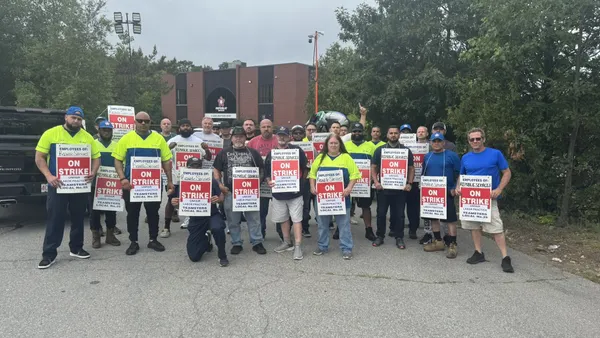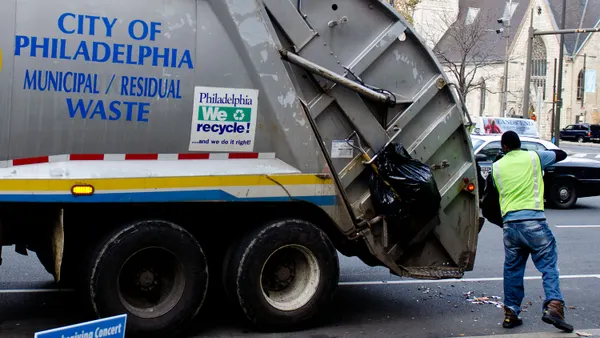Dive Brief:
- Back in 2017, the District of Columbia’s Department of Public Works (DPW) added foodservice packaging (i.e., paper plates and cups, plastic cups, lids, and takeout containers) and launched a "Waste Less, Recycle More" campaign. Now, the agency reports its efforts have paid off.
- Based on waste characterization studies conducted by consultant Resource Recycling Systems (RRS), the city's recycling program saw a notable 8% drop in contamination and a 9.5% increase in collected recycling — an additional 200 tons per month.
- Between July 2017 and June 2018, mixed paper increased 10.5%, PET cups and containers went up by 1.3% and plastic bags decreased by 0.6%. Decreases were also recorded for glass containers (2.3%), newspaper (3.4%) and cardboard (1.9%).
Dive Insight:
DC was among a handful of local governments that added material to its list of accepted items in 2017 — just months after the initial news of China's scrap import ban broke. With many municipalities confronting drastically reduced commodity prices and tighter import restrictions, achieving ambitious targets has become more difficult — but by creating a broader campaign around both contamination reduction and increasing capture rates, it appears that DPW's efforts have been a success.
Working with RRS, the project established a baseline recycling composition by weight from about 22 residential loads in July 2017. The initial audit revealed a 27% residue (contamination) rate and provided a breakdown of the recycling stream into 22 categories. A year later, the residue rate had decreased to 19.2%. Despite a decline in cardboard and newspaper, fiber increased 8% overall after a year. Common contaminants such as plastic bags and scrap metal both declined.
The outreach component included digital marketing, social media, advertisements at public transit locations, an online item search feature and videos. Informational mailers sent to residents and public transportation advertising were the most substantial traditional communication avenues utilized, with more than 18 million impressions achieved between bus and Metro rail advertisements alone. Standardized signs and flyers made messaging uniform for anyone participating in recycling — business or resident. After the initial campaign, the DPW ran a dedicated educational campaign reminding participants to leave recyclables loose due to the amount of bagged material found during the material audits.
The extra 200 tons of recycling per month is a step toward the 80% diversion goal mandated by the district’s Sustainable Solid Waste Management Amendment Act of 2014. The law created specific entities to enhance solid waste management and instituted a universal list of recyclable and compostable items for residents and businesses. The act stipulates that collected MSW be separated into three major categories: recyclables, compostables and garbage.
While the district has yet to meet its 12% contamination goal, a reduction to 19% within a year — while adding materials — speaks to the potential efficacy of consistent messaging.









